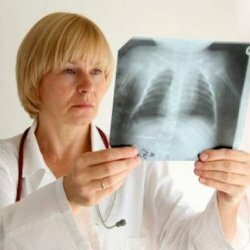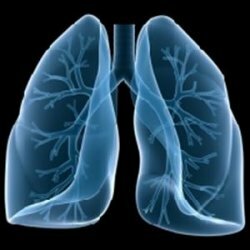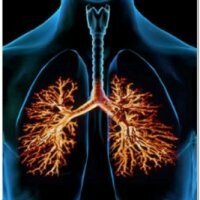The disease isssinosis
 Byssinosis is a disease of the lungs, which arises from contact with cotton and linen dust. They are affected solely by people working in the industry, on which flax or cotton processing takes place. Therefore, this disease can rightly be called professional. Also at risk are workers in enterprises engaged in making ropes. It is the dust formed in the process of activity that serves as the basic prerequisite for the development of abscissosis.
Byssinosis is a disease of the lungs, which arises from contact with cotton and linen dust. They are affected solely by people working in the industry, on which flax or cotton processing takes place. Therefore, this disease can rightly be called professional. Also at risk are workers in enterprises engaged in making ropes. It is the dust formed in the process of activity that serves as the basic prerequisite for the development of abscissosis.
Especially a large amount of dusting is accompanied by the processing of cotton, in particular, loosening and carding of fibers, as well as blowing the working surfaces and machines. Most often, the cause of the disease is poorly processed cotton of low grades. Often, in the dust formed during its treatment, various bacteria and fungi are contained. Therefore, people suffering from allergic diseases of the respiratory system, as well as inclined to excessive smoking, can not work in such enterprises.
Pathogenesis of the bassinosis
Recently, the study of the mechanism of the onset of abscissosis is much less important. Numerous studies have established that under the influence of dust formed from cotton or flax, biologically active substances released under the name of histamine, bradykinin and a number of others are released in the respiratory organs of man. It is their action that provokes the development of the disease.
Symptoms of
The disease is mainly manifested through the occurrence of dyspnea, in which a person experiences difficulty with every breath or exhalation, and a feeling of heaviness in the chest area is observed. In addition, the patient as a result of inhalation of dusty air appears cough. Such symptoms appear at the end of the shift that occurred immediately after the weekend. In medicine, it even received a special name "Monday Syndrome".At an early stage of the disease, this condition occurs rarely. But if you do not start treatment in time, then the appearance of symptoms will become more frequent until they begin to disturb the patient in every first shift after the weekend. Statistics in this regard are disappointing and show that about eighty percent of people working in shops where there is an increased dust content of the air, there are symptoms of abscissosis.
If the disease progresses, it is difficult for a patient to breathe during the whole working week. There is also a cough, especially at the end of the shift. But these symptoms usually pass during the weekend, when the worker's breathing organs do not come into contact with cotton dust. If we take the percentage, then the appearance of heavier forms of abscissosis is observed in patients who make up ten to twenty five percent of the total mass. Such a wide spread is explained by different conditions at each particular production, namely the amount of cotton dust in the air, as well as the duration of exposure of the harmful factor to the human body.
The behavior of the patient can also contribute to the progression of the disease. In particular, this disease is much harder for people who are heavy smokers. In the case of a more severe form, after about ten years, the patient develops respiratory disorders, for example, chronic bronchitis or, more rarely, bronchial asthma. By the way, bronchitis can be both a complication of abscess and develop completely independently of this disease. But nevertheless, in most cases, the dusty course of bronchitis is diagnosed. As for asthma, most often it develops on the background of bronchitis. Significantly less often, the cause of the disease is an infectious-allergic variant.
In addition, the clinical picture of abscissosis is characterized by the appearance of weakness, rapid fatigue, as well as a growing frequency of various ailments. In the bronchi area dry rales are clearly heard, especially during bronchospasm. An analysis of the patient's blood shows a slight leukocytosis.
Stages of the disease
In bissinosis, three stages are distinguished, which successively replace each other in the direction of weighting the patient's condition. At the first stage, the symptoms of the disease are observed in a person not often, about once a week. And their manifestation, as a rule, falls on the first working day after several days off.
During the second stage, the painful symptoms spread throughout the whole working week, but quickly stop in days that are free from work in dusty space.
The third stage is characterized by the appearance of respiratory insufficiency, as well as obstructive syndrome. The latter manifests itself in the violation of bronchial patency, the appearance of wheezing, coughing, and all the increasing symptoms of suffocation.
Diagnosis of the
bissynosis The diagnosis of the disease is carried out by a detailed study of the patient's anamnesis, as well as monitoring of workers during the production process. It is very important to distinguish between abscissosis and certain obstructive processes that occur as a result of prolonged contact with cotton or linen dust. Symptoms of abscissosis are practically identical to those resulting from a ventilation disorder, but in the latter case they manifest to a much lesser degree. An effective method for differential analysis is the results of functional air samples, which clearly show the level of its dustiness.
Treatment of
The early stage of the disease manifests itself in the appearance of painful symptoms on average once a week after the weekend. In this case, the prognosis for the patient is quite favorable. To treat the disease, bronchodilators are used, the main function of which is to eliminate the manifestation of bronchospasm. Also, H1-blockers, which effectively prevent occurrence of "Monday's syndrome", proved to be very successful.
In addition, it is recommended to take medications from the group of bronchodilators, in particular, isadrine or theophoodrin. These medicines exist in the form of tablets and syrups, but can also be used to prepare wet inhalation.
Preventive measures
For the prevention of this disease, fume hoods are used that significantly reduce the concentration of dust in the air. In addition, as far as possible, raw materials are processed not in a dry but wet manner. But these measures are effective only if production processes are accompanied by a relatively small dust generation. Otherwise, the only, sufficiently effective method of preventing the ingress of dust into the respiratory system is the use by each employee of individual protective equipment.
At any stage of the disease, patients are recommended to change working conditions to reduce the load from cotton dust to the respiratory system. As for workers who have dyspnea on a daily basis or have problems with external respiration function, their transfer to a workshop with a minimum level of dustiness is simply a necessity.



